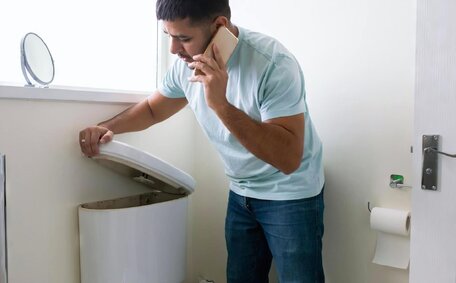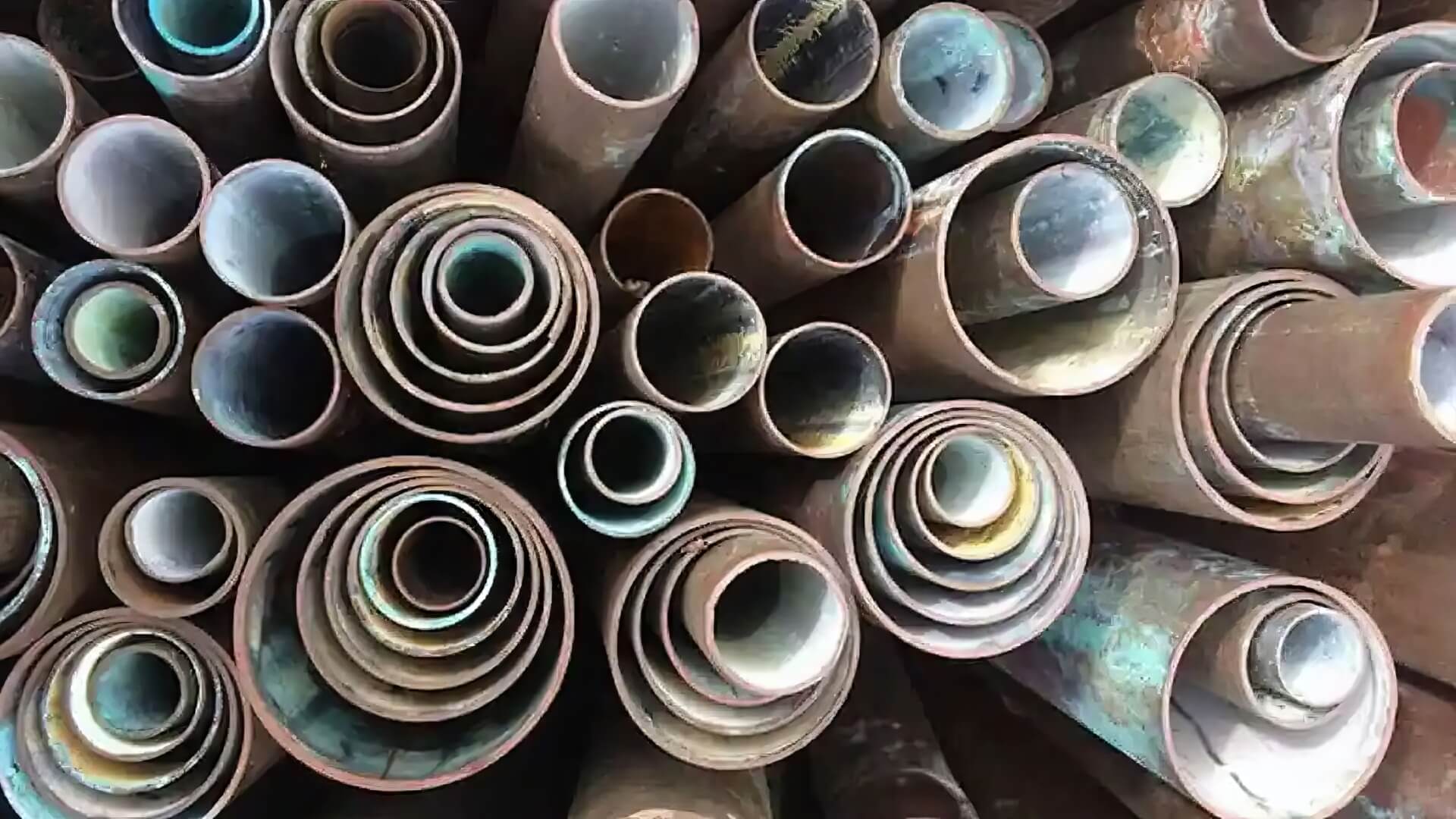
10 Signs Your Hot Water Heater Will Fail
If your water heater is old, leaking, rusty, noisy, not heating water properly or has low pressure, it could fail soon. Get your hot water system inspected today.
Read MoreHair buildup in pipes often leads to blockages and water backup. This common problem can escalate from a minor inconvenience to serious drainage issues if ignored.
When hair strands enter shower and sink drains, they can form blockages over time, impeding water flow.
At Mortdale Plumbing, we recognize the frustrations caused by clogged drains. We use specialised tools, techniques, and occasional drain cleaner products to remove hair buildup and get your water flowing freely again. Trust us to tackle any hair-clogged drain swiftly and efficiently.
Our seasoned plumbers are well-versed in resolving a variety of hair-induced blockages and drainage complications.
This guide will cover the journey of hair into drains, how to spot a hair clog, and strategies to eliminate and prevent these blockages. Continue reading to discover how to keep your drains clear of troublesome hair buildup.
Hair is one of the most common causes of clogged drains and whenever it goes down drain, it increases the risk of blockages. What happens when hair falls out naturally or is washed down the drain is, strands can get caught in pipe joints and connections. when hair goes down the drain and accumulates, it tangles and binds together with soap scum, grease, and other debris to form a dense mass that blocks water flow.
Your shower drains and bathroom sink drain are particularly prone to hair build up. Hair clogs can arise even from kitchen activities where hair from cleaning can block drains.
During shampooing, broken strands can enter the drain, where weakened plumbing with aged pipes or those compromised by tree roots and structural damages capture hair more readily.
Even short hair can accumulate and eventually clog your pipes.
Long hair clumps more readily due to its tendency to tangle as it goes down drains.
To prevent costly plumbing repairs, it’s crucial to regularly clear hair from your bathroom sink and drains. Simple steps like using drain screens, avoiding letting hair go down the drain, and regularly flushing pipes with baking soda or vinegar can help get rid of problematic clogs from accumulating in your pipes before they occur.
Common indicators of a hair clog in your shower drain include:
For persistent or severe clogs, Mortdale Plumbing’s expert team is equipped to rapidly clear even the most stubborn hair blockages.
Begin with DIY approaches such as using a drain snake, baking soda with vinegar, or manual extraction to unclog your shower. If you notice any of these signs, it’s likely you have blocked drains forming due to hair. Promptly removing hair from drains is crucial to prevent extensive backup and damage to your bath or shower.
There are several effective ways prevent hair clogs and keep your drains flowing freely:
With some diligent hair catching and pipe maintenance, you can help minimise hair blockages. But if a clog does occur, don’t hesitate to call the experts at Mortdale Plumbing. Our skilled technicians have the specialised tools and methods to unclog hair blockages quickly and efficiently.
To tackle a hair clog in your drain, consider these steps:
With some diligent maintenance and occasional deep cleaning, you can keep hair from accumulating in your hair drains and causing clogs in your bathroom and kitchen pipes. But if you have a stubborn hair clog that resist DIY efforts, the experts at Mortdale Plumbing have all the professional tools and know-how to get your drains flowing freely again.
There are several household items you likely already have on hand that can help dissolve and dislodge hair clogs:
When using household mixtures to clear drains, take safety precautions - wear gloves and eye protection, never mix chemicals, and use proper ventilation. Start with small amounts first to avoid any reactions. You can repeat treatments weekly as part of your drain maintenance.
For severe hair clogs, call in a professional plumber like Mortdale Plumbing. Our experts have industrial strength tools and methods to clear even the toughest hair blockages quickly and effectively.
Plungers and plumber’s snakes are two common tools homeowners can use to remove hair clogs from drains themselves.
Starting with a cup plunger can be an effective method to clear a hair-clogged sink, tub, or shower drain. Here’s how to use one properly to get hair out drain:
A metal plumber’s snake (or drain auger) can hook onto hair clumps and remove them. Follow these steps:
Persistence is key - multiple attempts may be needed to remove a significant hair clog with a snake. Get professional help for drains that won’t unclog. A plumber has powerful motorised snakes that can thoroughly clean out pipes.
Minor hair clogs can usually be resolved with home remedies, but persistent or serious blockages often necessitate professional intervention. Here are some signs it’s time to call a plumber to handle your drain clog:
At Mortdale Plumbing, we have heavy duty power snakes, water jets and suction equipment that can clear even the most severe hair and debris clogs from drains and pipes. Our licenced plumbers will thoroughly clean the drain system and identify any underlying issues to prevent future clogging.
For expert hair clog removal or drain blockage issues, contact Mortdale Plumbing at 1300 349 338 or via email at jobs@mortdaleplumbingservices.com.au. We operate 24/7 for emergency plumbing services. Trust us to get your drains smoothly flowing again.
In conclusion, hair buildup commonly leads to clogged drains and plumbing concerns in your residence. Regular drain maintenance by flushing with hot water, a baking soda vinegar mixture also helps prevent buildup.
Strands of hair can accumulate over time and bind with soap residue and grime to form dense clogs that block water flow. It’s important to be proactive and take measures to catch hair your before it reaches the drain, such as utilising drain screens and hair catchers.
Manual techniques such as drain snakes, plungers and boiling water can effectively extract hair from shower clogs.
For swift and efficient resolution of blocked drains, reach out to us on 1300 349 338.
Understanding the sources of hair clogs, taking preventive actions, and using appropriate removal techniques can help maintain clear drains. Contact Mortdale Plumbing if you have any persistent drain blockages - we’re here to help get your pipes and water flowing freely again.
If your water heater is old, leaking, rusty, noisy, not heating water properly or has low pressure, it could fail soon. Get your hot water system inspected today.
Read MoreIf you have plumbing fixtures that are over 10 years old or showing signs of wear like leaks and cracks, it’s important to replace them to prevent more costly water damage in the future. Replacing worn fixtures improves water efficiency.
Read MorePipe relining is a trenchless method that renews pipes from the inside out. It involves draining, drying and scrubbing the pipe interiors before applying materials like silicone, PMMA or epoxy resins to create a resilient, soft, temporary liner inside the existing pipes.
Read MoreMortdale, 2223 NSW
We will call back as soon as possible.




